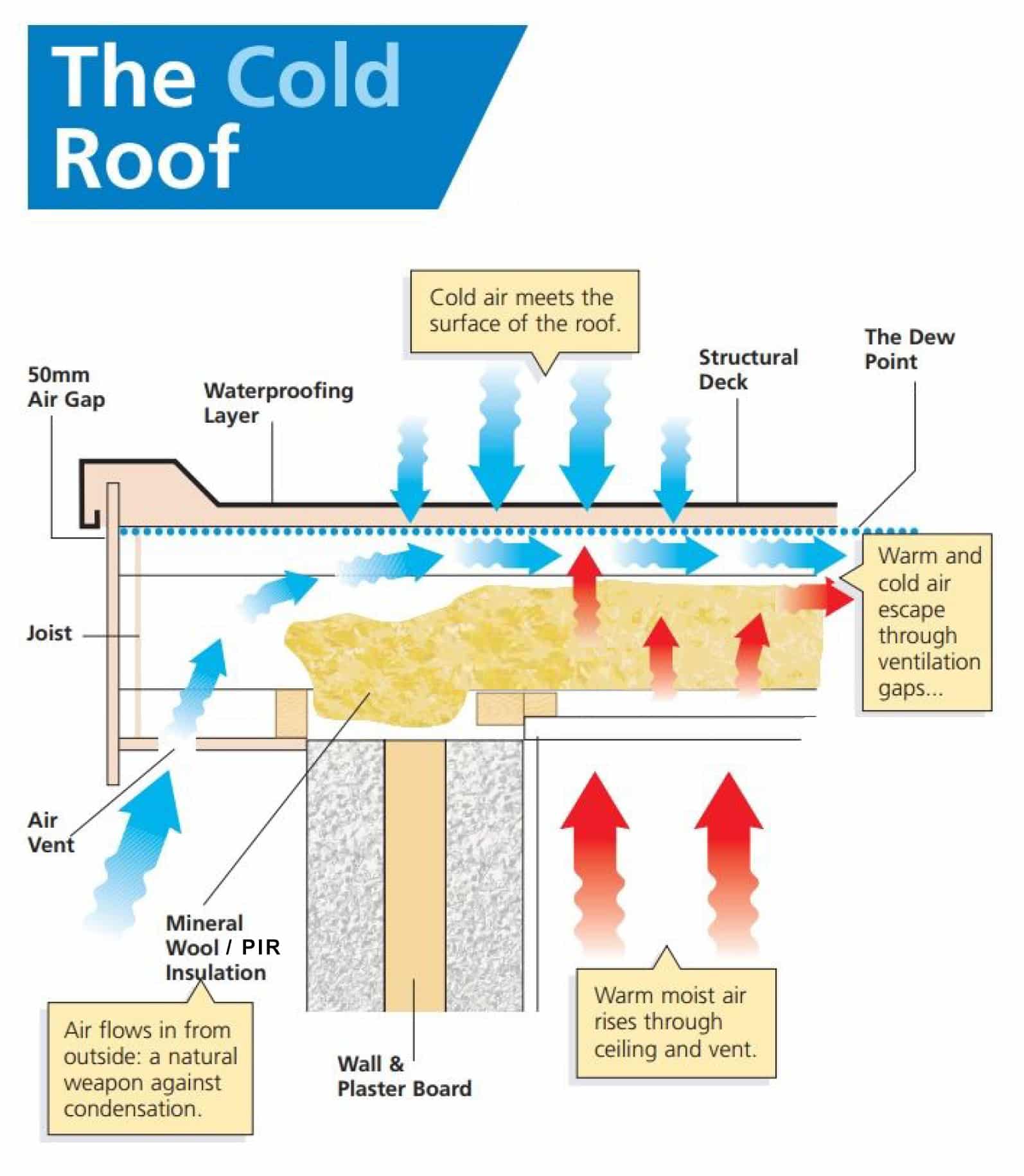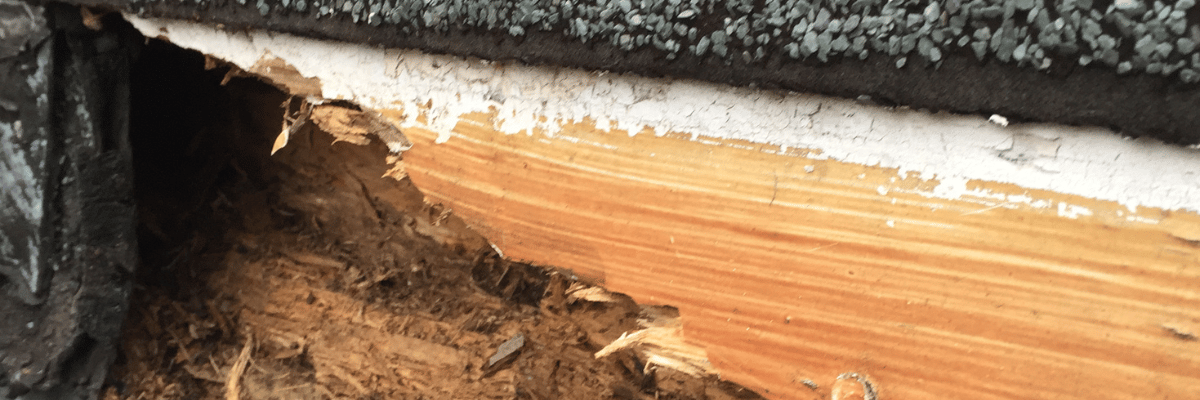Looking for a roof replacement and found yourself wondering ‘what is a cold roof?’ Are you thinking of installing or upgrading your current roof but are confused about the different types of roofs available?
It can quickly feel overwhelming when building regulations and materials get thrown into the fray of roof discussions. Maybe you’ve heard the terms “cold roof” and “warm roof” and nodded away like you knew what others were talking about, only to feel more perplexed than ever.
Maybe you’re looking for a new flat roof to replace a failing one, or you’re considering your options due to the need for more thermally efficient solutions. Do you want to know exactly what a cold roof is and whether it’s the right roof for your property?
Look no further, all the crucial information you need to make an informed decision is right here.
What Is A Cold Roof?
A cold roof is a type of flat roof. In fact, it was the original flat roof design put forward in the 1980s to help prevent condensation and mould.
A cold roof is called a “cold roof” because it has cold air that flows through it. This is by design – good ventilation is required in an attempt to blow away any condensation that may form when warm air rises up and through the ceiling of your property into the roof space.
The structure of a cold roof usually comprises of the following:
- Waterproofing layer (on the top)
- Structural deck
- Ventilation pathway
- Joists with insulation between
- A vapour control layer (VCL)
- Your ceiling (on the bottom)
In a cold roof, insulation sits directly on top of your ceiling plasterboard, ideally with a vapour control layer in between. Then a 50mm air gap is left above the insulating layer to allow airflow through all areas of the roof space. This will only work if the soffits or fascia are ventilated and there is a direct pathway through the roof. Cross-flow ventilation is essential to allow condensation to be removed from the roof, but does also compromise thermal efficiency.
How Does A Cold Roof Work?

What is a cold roof and how does it work exactly?
Our living areas tend to be warm and moist, thanks to heating, cooking, bathing and of course, breathing! This warm, damp air rises and filters through your ceiling into the roof cavity. When the warm air meets cooler air, (particularly during winters), this creates water droplets, aka condensation.
If condensation is not dealt with, damp spots and mould develop on ceilings, walls and your roof structure itself leading to wood rot and structural damage.
Bad news for your health and certainly bad news for the integrity of your property. It’s costly and difficult to put right once condensation becomes an issue. If you think you have condensation, read our blog about the warning signs of condensation here.
This is the reason behind the structural design of a cold roof – to invite as much airflow within the roof space as possible.
In a cold roof, as warm air rises through the ceiling, it meets cold air from downdraughts through the top of your roof. Add in air blown in from open vents and the hope is that sufficient ventilation will disperse any condensation.
Benefits Of A Cold Roof
Cold roofs don’t have a lot going for them – they’re not thermally efficient, they’re not cheaper to install, they’re not quicker or easier to install and they don’t necessarily last longer.
But they do have some benefits in very specific circumstances.
For example, if you have a height restriction due to the structure of your building or regulations or restrictions due to conservation areas or listed buildings.
Common Cold Roof Problems
So do cold roofs live up to expectations? Unfortunately not.
Experience has shown us that they’re not as effective at reducing moisture and condensation as they were originally hoped and expected to be. Why didn’t they work? Well, while ventilation is all well and good, not every area of your roof space can be reached even with the breeziest of cold roofs.
Instead, the rising of humid air from living spaces that then mix with the cold air of a cold roof creates more moisture and condensation since water droplets form when warm air hits cold air. The impact of a cold roof design has actually been shown to cause more significant issues with condensation, which manifests in a variety of ways:
Damp Spots
There will always be nooks and crannies in your roof cavity. Spots that cannot be reached by ventilation. The condensation that occurs in a cold roof will linger in the coldest spots, tucked away from the airflow. Creeping condensation creates damp spots which not only look ugly but also begin to deteriorate the structure of your property.
Rotting Timbers & Structural Damage
This leads us to rotting timbers and structural damage to your roof, walls and ceilings. That lovely new cold roof you recently installed? Before too long, the timbers will begin to rot from the inside out. Causing you stress and costing you money. The money you may have saved on installing a cold roof is very short-lived.

Expense
In the long run, a cold roof is more expensive. As the well-known saying goes, ‘Buy cheap, pay twice’ and it’s no truer than for a cold roof installation. The damp, condensation and mould damage created by a cold roof structure can be extremely costly to repair. You’ll wish you knew earlier and paid a little more for a better design from the start.
Poor Thermal Efficiency
Now, more than ever, it’s vital that the energy we use to heat our premises is efficient – to save money and fuel. Cold roofs are terrible at thermal efficiency. The heat from your home escapes through the roof and plenty of cold draughts blow in. When it’s cold, you need to continuously turn the heating up in a cold roof building to stay comfortable. Cold roofs perform so badly with thermal efficiency that the British Standards 2018 advise against them.
Is There An Alternative To A Cold Roof?
So what’s to be done? Is there an alternative to the cold roof?
Thankfully, yes.
Introducing – the warm roof. It’s the new premium standard for efficient roof structures. With its warm roof design, all of the heat from your property is kept within an insulating layer. Plus, with no downdraughts or ventilation through your roof cavity, your premises are kept well insulated and far more thermally efficient.
Cold air is kept out of a warm roof space so there’s no mixing of contrasting air temperatures. The effect? No condensation. A warm roof gives you a well-insulated home, free from condensation, dampness, mould and those chilly draughts.
In summary, what is a cold roof? Cold roofs tend to be more common but they’re a roof design with a plethora of problems; from condensation and mould to expensive damage and chills. But you don’t have to put up with it! There’s a better solution available – warm roofs with all their warm and cosy benefits that will save you stress and money in the long run.
Still not convinced? For more about how warm and cold roofs compare, check out our recent blog post, ‘Cold Roof Vs Warm Roof: What’s The Difference’.

